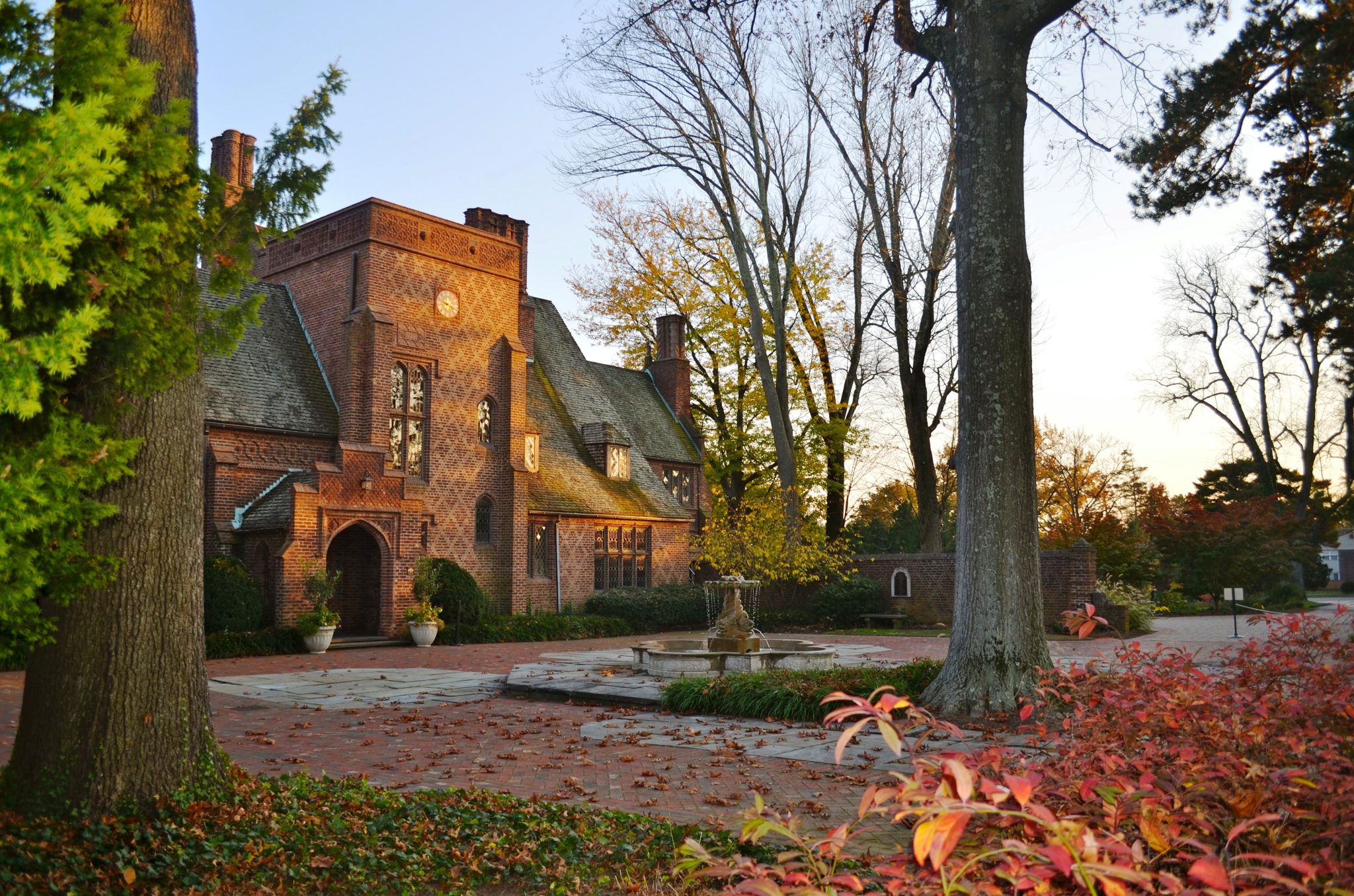Aldie Mansion, Heritage Conservancy’s headquarters, bathed in autumn leaves.
Some of us welcome the fall season with open arms, while others dread the onset of shorter days and frigid weather. However, I believe that both camps can appreciate just how beautiful our landscapes become each autumn. A seemingly uniform blanket of green transforms into a vibrant array of colors: reds, yellows, oranges, and browns, or some combination thereof. These colors are certainly appreciable, but to what extent do people truly understand and appreciate the specifics of what they see? How familiar are we with the reasons behind these colors? In this article, I’ll highlight some of the major contributors to the variety of colors we see in autumn. Let’s start with many people’s favorite:
Red
Red Maple (Acer rubrum) is one of the most common tree species in the eastern United States. It is highly adaptable, occupying a wide variety of environments and conditions, which contributes to its ubiquity. One of the primary reasons it is so commonly planted is its stunning red foliage in the fall. While I don’t know that our landscapes need many more Red Maples, this species is both native and beneficial to pollinators. From an aesthetic perspective alone, it’s understandable that people would want to see more of this species.

Black Gum (Nyssa sylvatica) is far less common than the Red Maple but is arguably just as vibrant. What sets the Black Gum apart from some of the other trees in the fall is how glossy its leaves can be, not dissimilar to the appearance of Holly leaves. In addition to sporting fiery reds, its leaves possess a particular shininess. This species can be relatively non-descript at other times of the year and is often overlooked for that reason. Nevertheless, the Black Gum is a highly adaptable and long-lived tree species that provides food for birds and mammals, as well as nesting space for the former.

Virginia Creeper (Parthenocissus quinquefolia) is the only vine to make the list, though other native vines like Poison Ivy also display notable fall color. Virginia Creeper is a somewhat aggressive and very common native vine species, but it produces some of the most stunning reds you can find each and every fall. Its vibrance really stands out when it climbs up utility poles or garden lattices.

Yellow/Orange
Birches (Betula spp.) are a relatively well-known and appreciated group of trees. River Birch (Betula nigra) and Paper Birch (Betula papyrifera) are both widely planted for their ornamental value, some of which derives from their beautiful displays of yellow in the fall. Sweet Birch (Betula lenta) and Yellow Birch (Betula alleghaniensis) are also occasionally encountered, typically in wild settings where their leaves provide a fresh layer of organic matter for critters to hide beneath.

Hickories (Carya spp.) are another relatively recognizable group of trees. With respect to feeding wildlife, they produce some of the most coveted food our forests have to offer. Around the same time that their branches relinquish hickory nuts, their large, compound leaves glow with a deep yellow, almost orange color. Some of the more common hickories found in this region include Shagbark Hickory, Pignut Hickory, Mockernut Hickory, and Bitternut Hickory, the latter of which has yellow buds to match its fall foliage.
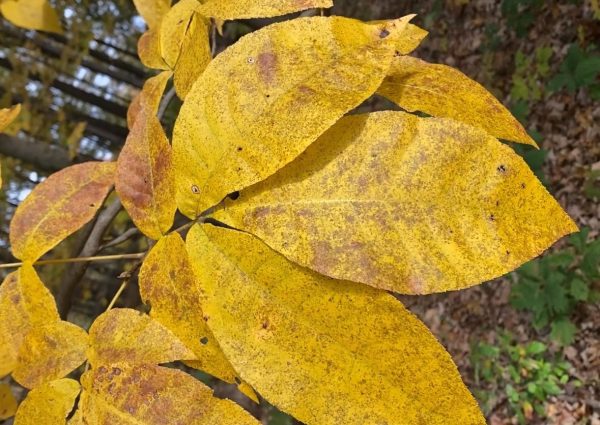
Ash (Fraxinus spp.) trees used to be coveted for their leaves, believe it or not. Before the introduction of the Emerald Ash Borer (EAB), this genus comprised a large percentage of the trees found in southeastern Pennsylvania. While most are no longer living, you can still find immature Ash trees and, in some instances, mature trees that have been treated to control EAB. Without a doubt, in addition to all of the ecological benefits of this genus, we’ve been deprived of some of the most amazing displays of yellow that fall has to offer. If you know of any live Ash trees, consider visiting them this fall and appreciating them while you can.

All of The Above
Sugar Maple (Acer saccharum) is a species best known for its propensity to produce syrup, but I think that’s where much of its appreciation stops. Inarguably, it has some of the most stunning fall colors, and given how large and round its canopy tends to be, its display can be truly eye-catching. Its leaves, come fall, shine with mixes of red, orange, and yellow, almost giving them a flame-like appearance. The Sugar Maple is planted all over the place, so it shouldn’t be difficult to appreciate its incredible appearance throughout the course of autumn.
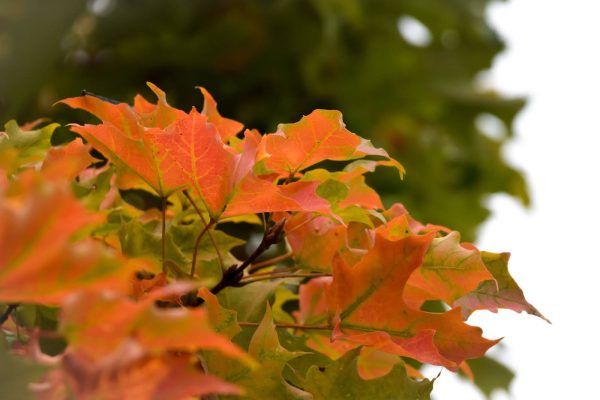
Sassafras (Sassafras albidum) is a relatively common tree species in Pennsylvania that is found in a variety of environments. Its leaves are easily recognizable, as they come in several shapes, two of which resemble mittens and theropod dinosaur feet, respectively. Those same leaves burst with color each fall, shining red, yellow, and orange simultaneously.
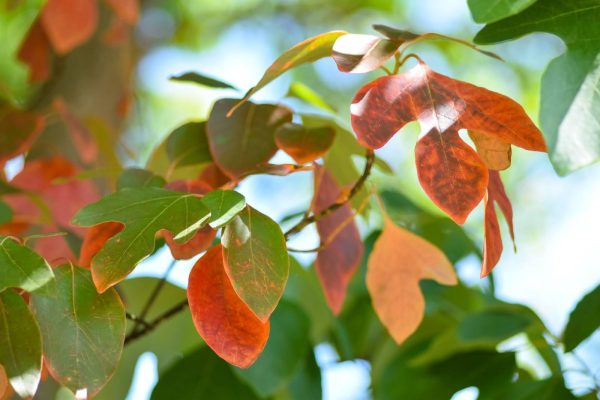
Sumac (Rhus spp.) probably belongs in the red category, but it isn’t uncommon to find sumacs lit up with red, orange, yellow, and green all at the same time. Pennsylvania is home to a few sumac species, so keep an eye out for Staghorn Sumac (Rhus typhina) and Smooth Sumac (Rhus glabra) along roadways and other edge habitats. The brilliant colors they display should make them very easy to spot.

The Fancy Few
Maple-leaved Viburnum (Viburnum acerifolium) is the only species on the list with legitimately pink leaves. It’s not a color you see too often in nature, with the exception of flowers. Maple-leaved Viburnum is a small understory shrub found only in areas with low deer pressure. It is the perfect height for White-tailed Deer and is readily gobbled up in areas with high deer densities. If you know of some healthy woodlands, consider seeking out this species this fall. It should be easy to spot as it will be right at eye level or just below, and should display some combination of pink, purple, and red.
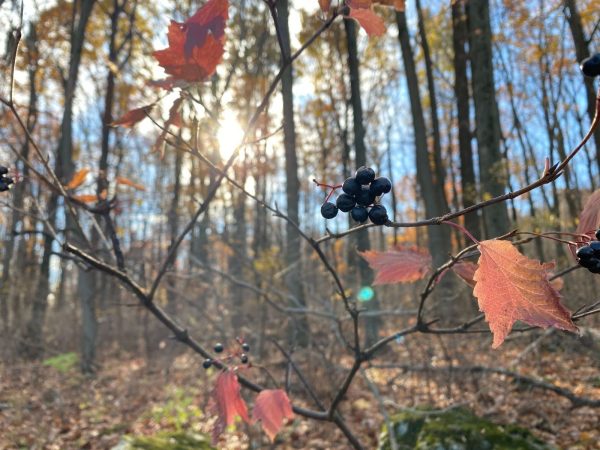
Sweet Gum (Liquidambar styraciflua) is commonly planted ornamentally, so it is easily appreciable each fall. Its leaves somewhat resemble those of a maple but are more traditionally star-shaped. Of course, the shape of its leaves isn’t why it is featured in this article. Out of all the species we’ve mentioned, Sweet Gum probably displays the widest range of colors, including deep purples. There isn’t a natural fall color that this species can’t produce, so we’d be remiss if we didn’t mention it.
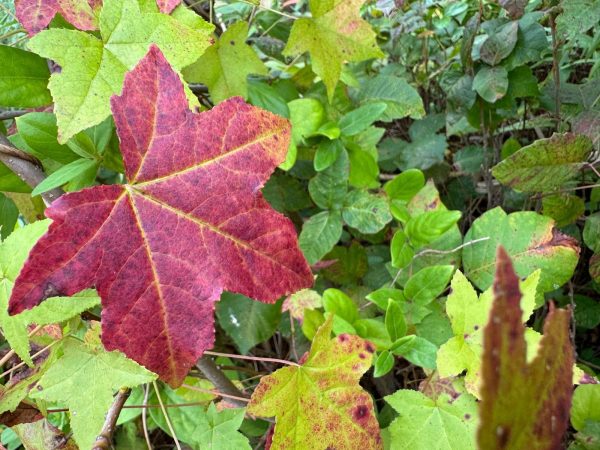
Winged Sumac (Rhus copallinum) was purposefully left off the aforementioned list of sumacs. This species deserves a spotlight of its own, as it often displays a beautiful burgundy or dark red color each fall. It is called Winged Sumac because the rachis of its compound leaves is winged itself, which also shines with a beautiful burgundy color. This is definitely the least common of the sumacs in this region, but it’s worth seeking out, especially in autumn.
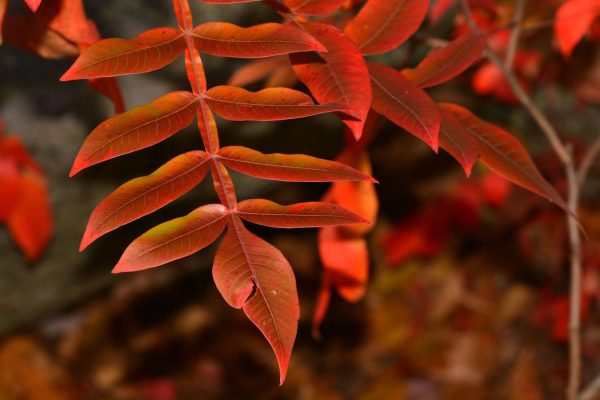
In Conclusion
I hope this post has provided some context as to whom we should be thanking for all of the pretty colors this autumn and next. By no means is this an exhaustive list, and it’s worth mentioning that each genus and species I listed has values well beyond their looks. Each serves a particular role in the functioning of our local ecosystems. I encourage you to get out, maybe grab a pumpkin-spiced something, and take a walk to familiarize yourself with our native trees. This is one of the best times of year to do so.
Thanks for reading.
Sebastian Harris, Conservation Easement Steward
A great place to see some of these fall colors is at our 40-acre Fuller-Pursell Preserve: 2858 Slifer Valley Rd, Riegelsville, PA. While you may not find all of these trees, species like birches, hickories, and sugar maple should be plentiful.
